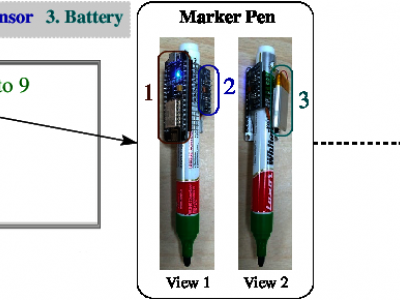Machine Learning

This aerial image dataset consists of more than 22,000 independent buildings extracted from aerial images with 0.0075 m spatial resolution and 450 km^2 covering in Christchurch, New Zealand. The most parts of aerial images are down-sampled to 0.3 m ground resolution and cropped into 8,189 non-overlapping tiles with 512* 512. These tiles make up the whole dataset. They are split into three parts: 4,736 tiles for training, 1,036 tiles for validation and 2,416 tiles for testing.
- Categories:
 379 Views
379 Views
Dataset is intended for studying how student programming styles and usage of IDE differs between students who plagiarise their homework and students who solve them honestly.
- Categories:
 5195 Views
5195 Views
This data includes 350 Korotkoff sounds and their corresponding osciilometric waveforms, cuff pressure and detected systolic and diastolic pressures.
- Categories:
 1465 Views
1465 Views
This MATLAB dataset (.mat) contains the collected real measurement data from a total of 470 access points (APs) deployed in the Linnanmaa campus of the University of Oulu, Finland. The measurements include IDs, dates of data collection, number of users, received traffic data, transmitted traffic data and location names of each AP. Each observation of traffic data and number of users provide the data value at every 10-minute interval between December 18, 2018 and February 12, 2019. Please cite this as: S. P. Sone & Janne Lehtomäki & Zaheer Khan.
- Categories:
 2236 Views
2236 Views
E-nose can be used for food authentication and adulteration assessment. Recently, halal authentication has gained attention because of cases of pork adulteration in beef. In this study, The electronic nose was built using nine MQ series gas sensors from Zhengzhou Winsen Electronics Technology Co., Ltd for detection pork adulteration in beef. The list of gas sensors are MQ2, MQ4, MQ6, MQ9, MQ135, MQ136, MQ137, and MQ138. These gas sensors were assembled with an Arduino microcontroller.
- Categories:
 1245 Views
1245 ViewsThis data set includes Covid-19 related Tweet messages written in Turkish that contain at least one of four keywords (Covid, Kovid, Corona, Korona). These keywords are used to express Covid-19 virus in Turkey. Tweets collection was started from 11th March 2020, the first Covid-19 case seen in Turkey.
Currently dataset contain 4,8 million tweets with 6 different attribute of each tweets that were sent from 9 March 2020 until 6 May 2020.
The data file contains comma separated values (CSV). It contains the following information (6 Column) for each tweet in the data file:
- Categories:
 5661 Views
5661 ViewsWe collected experimental field data with a prototype open-ended waveguide sensor (WR975) operating between 600 MHz - 1300 MHz. With our prototype sensor we collected reflection coefficient measurements at a total of 50 unique 1-ft^2 sites across two separate established cranberry beds in central Wisconsin. The sensor was placed directly on top of cranberry-crop bed canopies, and we obtained 12 independent reflection coefficient measurements (each defined as one S11 sweep across frequency) at each 1-ft^2 site by randomly rotating and/or translating the sensor aperture above each site. After
- Categories:
 293 Views
293 ViewsThe PRIME-FP20 dataset is established for development and evaluation of retinal vessel segmentation algorithms in ultra-widefield (UWF) fundus photography (FP). PRIME-FP20 provides 15 high-resolution UWF FP images acquired using the Optos 200Tx camera (Optos plc, Dunfermline, United Kingdom), the corresponding labeled binary vessel maps, and the corresponding binary masks for the valid data region for the images. For each UWF FP image, a concurrently captured UWF fluorescein angiography (FA) is also included.
- Categories:
 3442 Views
3442 ViewsThis dataset consists of sensory data of digits, i.e., from 0 to 9. The dataset is collected from 20 volunteers by using a 9−axis Inertial Measurement Unit (IMU) equipped marker pen. The objective of this dataset is to design classification algorithms for recognizing a handwritten digit in real-time.
- Categories:
 2212 Views
2212 Views



